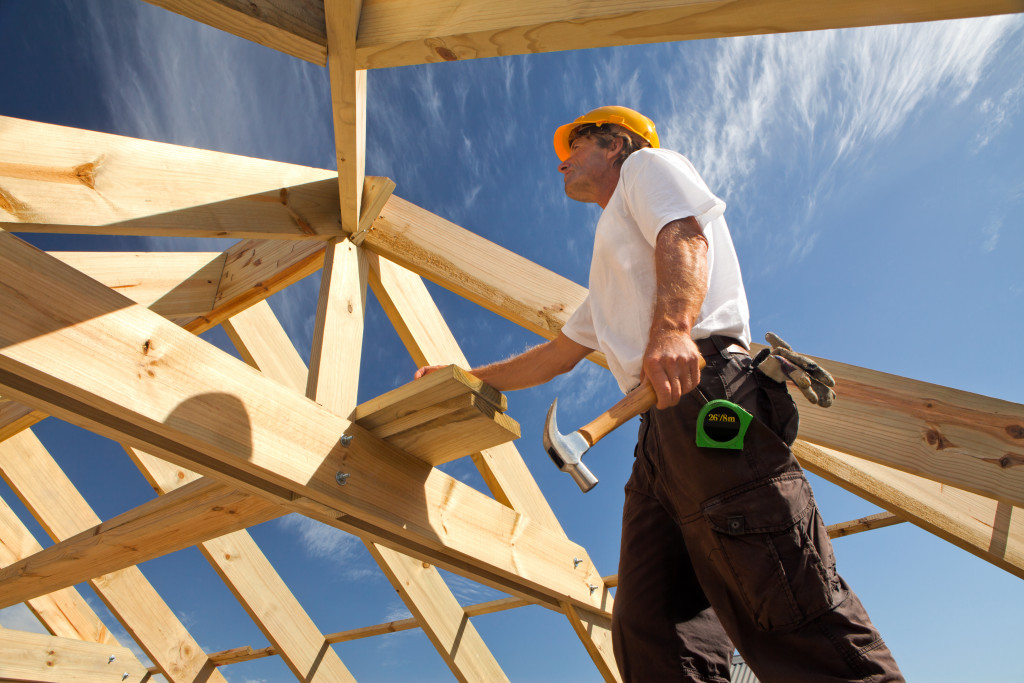DIY projects and self-built homes have seen an unprecedented boom in the UK due to the COVID-19 lockdowns—so much so that it has been causing a massive shortage of building materials. But as countries slowly reopen, supplies will start picking up, and people can start rolling up their sleeves again.
Whether you’re a crafty husband looking to build your family’s dream home or a bachelor dreaming of a bespoke place you can call home, now’s the perfect time for a self-building project.
Self-built homes are not a new concept. Even before the pandemic-induced DIY craze, people without little to no architecture or construction know-how have embarked on this bold path. Some fail, and some succeed, but learning from those who have come before you can ensure a great outcome.
A self-built home is an opportunity for you to break away from mainstream or cookie-cutter home designs. Since you get to plan and project-manage the build itself and even get involved in the nitty-gritty aspects, you’ll get full control of the outcome.
Follow these tips to help you manage your self-build smoothly:
Secure funding
Securing financing is the crucial first step of your self-building project. Knowing how much you can borrow based on your financial standing will determine where you’re going to buy land, how big your plot and house are going to be, and what the quality of the overall build is. So before you begin planning your project, consult with your bank first so you can set your budget.
Find land for sale
Once you’ve secured financing or got pre-approved, you can start looking for the ideal land to build your dream home. While your budget should be your main consideration, you should also consider your family’s needs and wants. Keep in mind that the cost of land will depend on the location, so if you’re on a tight budget but want a big home, consider looking further beyond the city.
Choose a structural system
The construction method you choose will have a significant impact on your home’s appearance and performance. So it’s important to decide which one you’ll use. Options include brick and block, oak, timber, insulated concrete formwork, structural insulated panels, and thin joint blockwork. In addition to your design preferences and budget, other deciding factors include the area’s climate, surroundings, and local building regulations.
Design your home
If you have a knack for designing homes, you can create the design brief for your own self-build and consult an architect for professional insights. Nowadays, you can draw up your design and even get high-quality renders using digital programs like Sketchup and Autodesk. Consume as many architectural articles and books as you can to learn about fundamentals and innovations.

Project manage your self-build
The whole point of a self-build is that you don’t need to hire a firm to manage all aspects of the project for you. Not only will you save plenty of money, but you’ll also be the main decision-maker in the project. To ensure success, it’s important to plan carefully how you will project manage your build. You should account for different aspects of building a home, from taking a CSCS test to budgeting.
Secure building permissions
Getting planning permission from your local council is a prerequisite to building your home. To secure building approval without a hitch, you’ll need to submit your detailed drawings. You can work with your architect to help guide you through this process. You can even hire a consultant for more complex builds like eco-friendly homes or buildings using natural materials like rammed earth.
One way you can make sure your plan gets approved is to arrange a pre-application meeting so the local council can assess the land you’re going to build on, your design proposal, and other factors like the surrounding architecture and protected species or habitats in the area. Of course, make sure to follow your initial approved plan as the council will inspect your self-build upon completion to check if the conditions have been met.
Find trusted contractors and suppliers
From the moment you break ground to the day you move into your new home, you will be working closely with contractors and suppliers. As the de facto project manager, it’s your job to look for the most trusted in the industry. After all, they will be the ones who will bring your dream to life.
Don’t just go for the cheapest bid. Find out what previous clients have to say about them and study their past projects to gauge their capabilities. Once you’ve chosen your builders and vendors, do your best to maintain a trusting and open relationship with them to avoid any problems along the way.
In addition to these steps, it would also be wise to get insurance and structural warranties from your contractors and suppliers. This way, you can have damages or issues repaired without additional cost.

